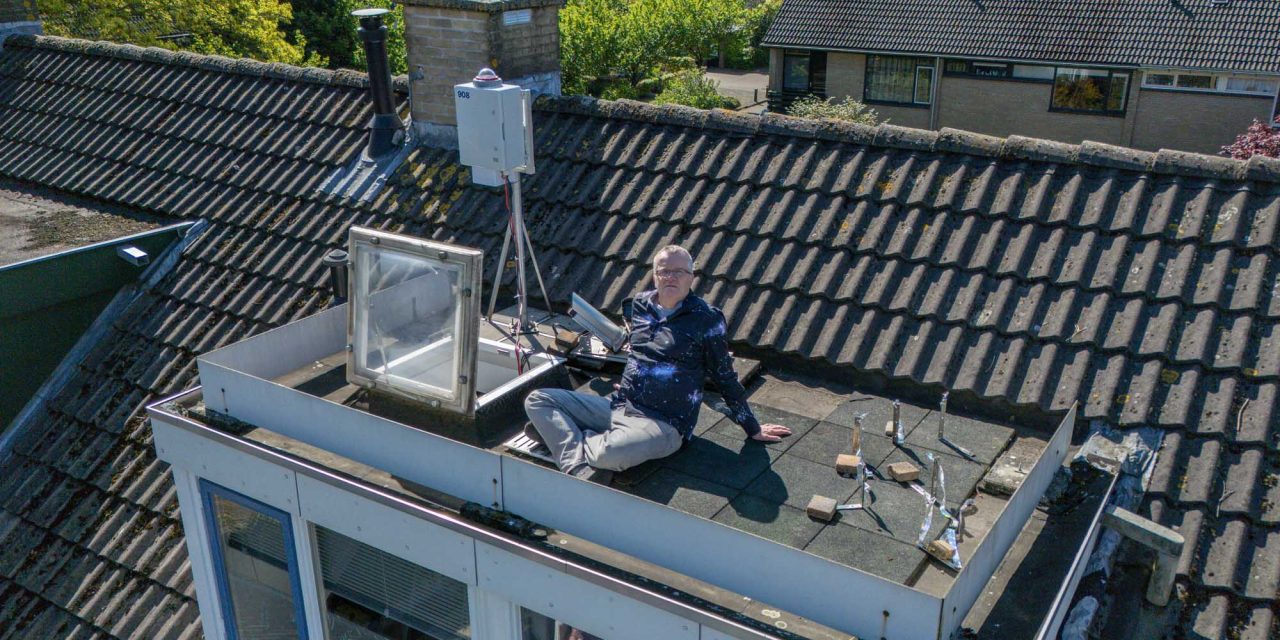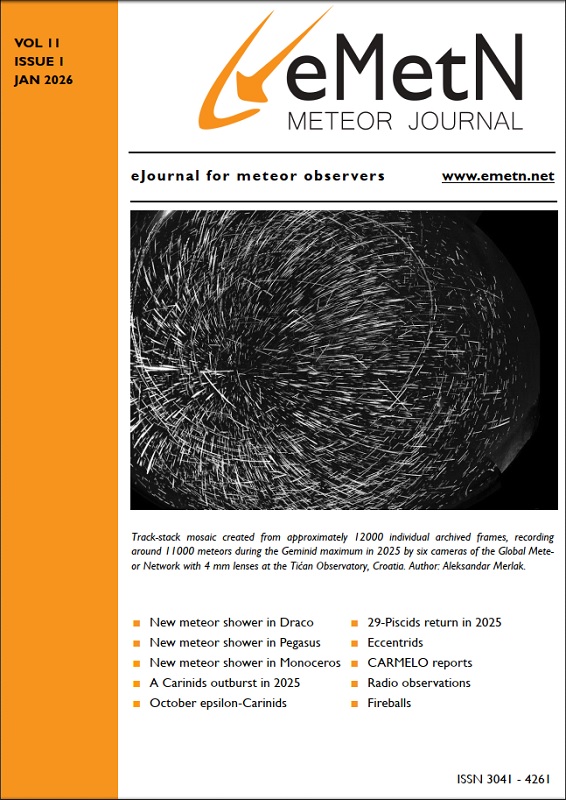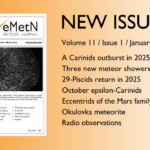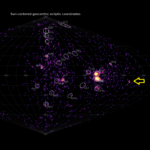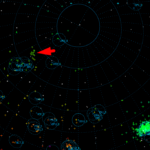Figure 1. The author on the flat roof of the dormer with four CAMS systems and all sky camera EN908. The ribbons on the right are to keep the jackdaws away from the flat roof © Pim van Velthuizen photography (http://pimvelthuizen.nl/).
Introduction
In the last visual report [1] I wrote as the last sentence: Let’s hope that the many clear nights will become a trend this year. Well, the months after that spring was full of clear nights and dry conditions. But there are some reservations: why doesn’t this happen in the fall instead of during the low meteor activity in the spring? Murphy’s Law in full swing…
In the spring, the moon always quickly interferes after the new moon phase. This has to do with the steep angle that the ecliptic makes with the horizon in the spring from the Northern hemisphere. Already during the first quarter phase, the moon interferes all night long. Advantage: after the full moon (this year on March 14), the moon quickly disappears from the astronomical scene.
Night reports
The first clear evening was:
March 17/18, 2025
This session started with very low expectations, after all we are in the nadir of meteor activity in the northern hemisphere. And then also observing in the evening. Observations were carried out between 19:25 and 21:27 UT. Two hours and only 7 meteors of which 3 Antihelion (ANT). No bright meteors. The SQM measurements clearly show how much light comes from the houses and gardens, SQM measurements remained around 19.00… Fortunately, the public street lighting is dimmed at night and is well shielded.

Table 1. Meteorcounts March 17, 2025.
March 18/19, 2025
Another evening session because of the moon. The session started a bit later. The sky was just as clear as the previous one, but it was remarkable that the SQM of maximum 20.12 was already a lot better: most people turn off their garden lights after 21 UT. Two hours effectively yield 11 meteors, of which 4 ANT. A +1 SPO is the highlight of this session.

Table 2. Meteorcounts March 18, 2025.
March 19/20, 2025
This time a three hour session because Thursday is also a day off. Signed in between 21:55 and 00:58 UT. During the last hour some clouds suddenly appeared out of nowwhere and moved north. The session ended when cirrus came in from the west. During 3 hours effectively 21 meteors were counted. Also 5 Antihelion meteors are seen, the nicest a +1 right through Cepheus. Another striking appearance: a nice slow +1 sporadic (SPO) meteor moved from the Ursa Major to Bootes.

Table 3. Meteorcounts March 19/20, 2025
March 27/28, 2025
During a somewhat hazy night, observations were possible between 0:43 and 02:45 UT. These two hours yielded 13 meteors, of which 3 from the Antihelion region. No bright meteors.

Table 4. Meteorcounts March 28, 2025.
March 30/April 1, 2025
A remarkable session! During the entire session, low-hanging clouds/mist were visible low above the village in the north. However, observations could still be made for over an hour before this mist with a northeasterly wind blocked the view of the starry sky. 10 meteors were counted, of which remarkably enough 5 from the Antihelion region. The following night (April 1/2, 2025) the scenario of this night repeated itself. No observations from that night.

Table 5. Meteorcounts April 1, 2025.
April 2/3, 2025
During a three hour session (00:15-0-3:18 UT) I counted 16 meteors of which 3 ANT. The entire period there was cirrus low in the south, outside my field of view, moving in a west to east direction.

Table 6. Meteorcounts April 3, 2025.
April 3/4 2025
A final session before the almost first quarter moon would disturb meteor observations all night. Between 00:41 and 02:11 UT observations were done during 1.5 hours which yielded 12 meteors, this thanks to the good transparency. 3 meteors from the Antihelion region were counted. The best one was a +1 with a wake.

Table 7. Meteorcounts April 4, 20-25.
After the full moon came the Lyrid period, always a beautiful period in the (meteor-quiet) spring. Unfortunately the weather did not cooperate, the period between April 21 and 25 was almost cloudy.
April 18/19, 2025
So far the clearest night from Ermelo in 2025. An enormous transparency (and darkness with SQM measurements above 20.40, almost a record from my home), also at low altitude resulted in relatively many meteors. The Milky Way was visible from Cassiopeia to below Scutum! That happens so rarely. More than two hours of observing yielded 30 meteors, of which 6 Lyrids (LYR) and 5 Antihelion meteors. The most beautiful meteor was a slow +1 ANT in the Big Dipper.

Table 8. Meteorcounts April 18/19, 2025.
April 19/20, 2025
Clear again, but less than the previous night. Between 23:40 and 01:30 UT 16 meteors are counted, of which 2 ANT and 2 LYR. No really bright meteors.

Table 9. Meteorcounts April 19/20, 2025.
April 25, 2025: Knight in the Order of Orange Nassau!
No observations but making orange pastries tonight because of King’s Day on April 27, a national day off. However, in the morning I was lured to the town hall of Ermelo. There I was surprised with a medal and can call myself Knight in the Order of Oranje- Nassau. This was organized by a number of members of the Dutch Meteor Society. I got this honor because of the observations, the interest in meteors, the processing of observations, articles, editor of the magazine eRadiant (2005-2018) and many participations in the expeditions. A big thank you to my fellow DMS friends. As I said at the spring DMS meeting: this is also the result of a positive interaction between me and a number of DMS members.
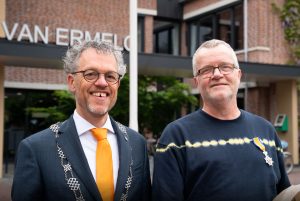
Figure 2. The author together with the Mayor of Ermelo Hans van Daalen (© Dyane Ribbink).
April 26/27, 2025
A 2.5 hour session yields another 17 meteors of which 1 Lyrid and 1 Antihelion. The latter was a +1 ANT in the constellation Lynx.

Table 10. Meteorcounts April 26/27, 2025.
April 27/28, 20252025
Another 2.5 hours of observations. 20 meteors were counted of which 1 Lyrid and 3 from the Antihelion region. Finally some more bright meteors: 0:36 UT a long +1 sporadic meteor in the Big Dipper, 01:26 UT a +1 Antihelion in Cancer low west and the nicest at 01:53 UT: a 0 sporadioc meteor low in the northwest. Furthermore at 2:36 UT the ISS became visible in Ophiuchus and moving east.

Table 11. Meteorcounts April 28, 2025.
April 30/May 1, 2025
Once again2.5 hour session, yielding 19 meteors of which 1 late Lyrid and 3 Antihelion meteors. Two sporadic meteors of +1 were the most beautiful apparitions. Also a bright ISS passage was seen around 1:47 UT moving from Bootes to Pegasus.

Table 12. Meteorcounts April 30/May 1, 2025.
After the moonlight period of May 5-14, observations started again:
May 15/16, 2025
A two-hour evening session yielded 12 meteors of which 1 late eta Lyride (ELY) of +2 and 2 meteors from the Antihelion region.

Table 13. Meteorcounts May 15, 2025.
May 18/19, 2025
A three hour session resulted in 21 meteors. No bright meteors.

Table 14. Meteorcounts May 18/19, 2025.
May 20/21, 2025
Unfortunately, this session ended after an one hour with fog and cirrus. 8 meteors are counted. One of them a meteor from the Antrihelion region. However, the most beautiful meteor was a medium fast sporadic of magnitude -2 which with a path from the Ursa Major to Canes Venatici. Unfortunately, this is the last session during Spring 2025, a period of more unstable weather begins.

Table 15. Meteorcounts May 20, 2025
New “home”for all sky camera EN908 Ermelo.
With the old box of the all sky camera there were some problems with moisture. This was not so much due to the box but more to the wish to work as much as possible without front glass, in order to obtain higher quality of the recordings. The new larger box is now equipped with adjustable lens heating, on hot days a Peltier element ensures that the box remains around 22 degrees Celsius. The control of the camera (a Canon 6D with a Sigma 8 mm F 4.0 fish eye lens) is done with a Linux PC that uses software from the Czech all sky network. Also new is the control of the Liquid Crystal Shutter. Previously the shutter was set to 16 breaks per second. The new control makes 15 breaks and then skips one. This is done by means of a GPS receiver and always happens exactly to the second. The device was built by Hans Betlem in collaboration with Felix Bettonvil and Marc de Lignie.
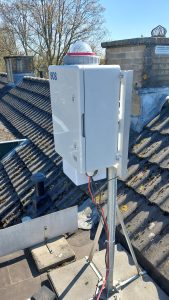
Figure 3. A new box for the all sky camera EN908 Ermelo. A plastic dome is protecting the lens against dew and rain.
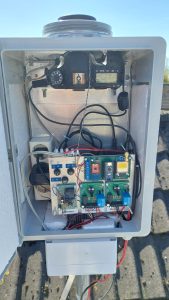
Figure 4. Inside of the new all sky housing EN908 Ermelo. During periods without rain the camera can operate without the plastic dome.
This give much better measuring results, especially with fireballs appearing low above the horizon.
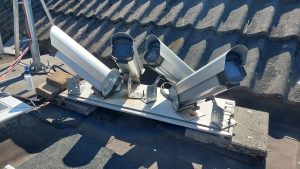
Figure 5. Also on the meteor roof: 4 CAMS systems.
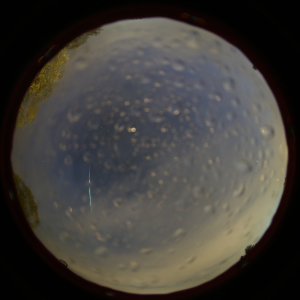
Figure 6. After an evening with rainshowers the sky cleared: a bright fireball was captured between clouds on April 15, 2025 at 19:55:44 UT.
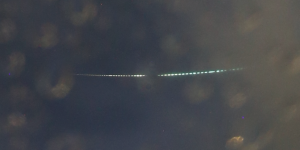
Figure 7. Close up of the previous image. Clearly visible the longer breaks for exact time markers in the meteor trail.
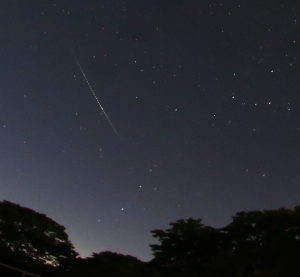
Figure 8. A much sharper image from a fireball without the plastic dome. This fireball appeared on May 16, 2025 at 01:27:53 UT.
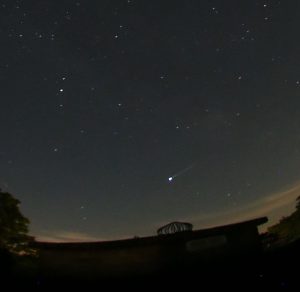
Figure 9. Fireball with a terminal flare on May 19, 2025 at 01:06:53 UT.
Summary
All in all a good spring for visual meteor, CAMS and all sky observations, despite missing the Lyrid maximum. Again hoping that this will be a trend for 2025…

